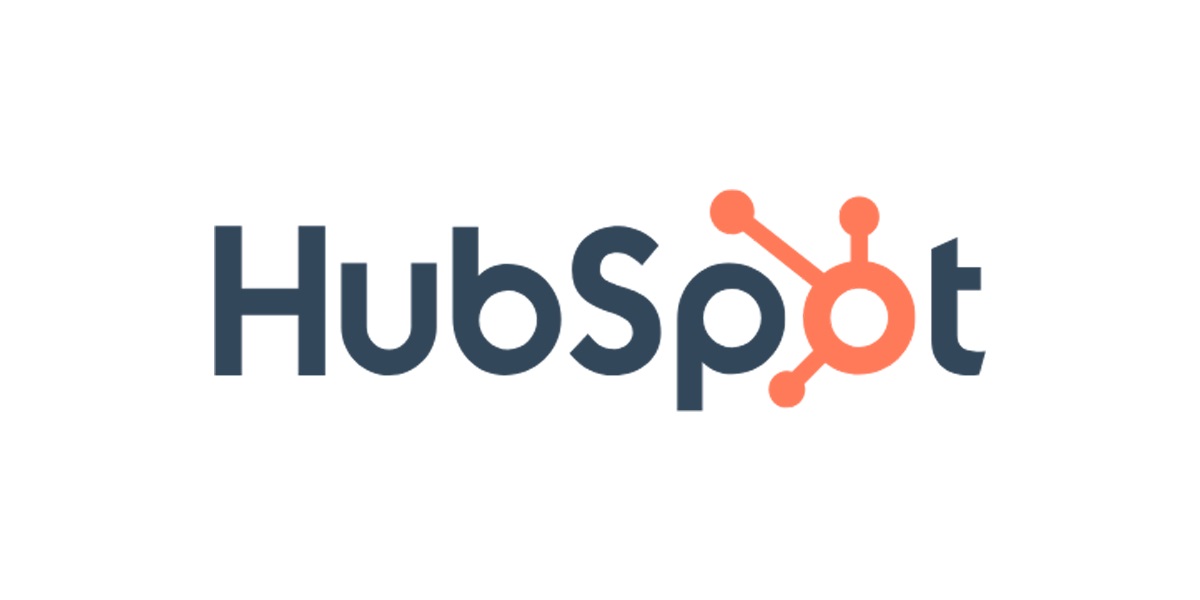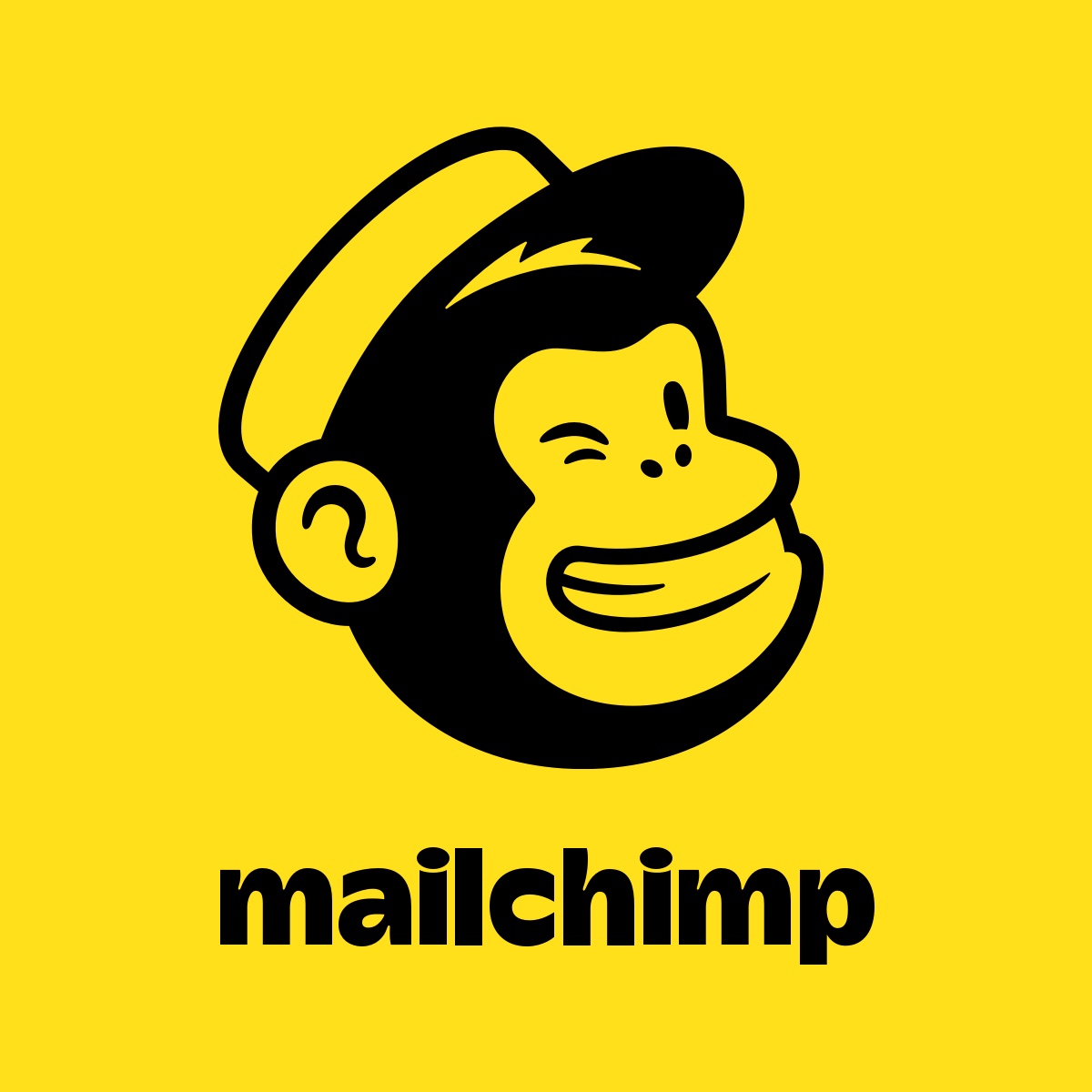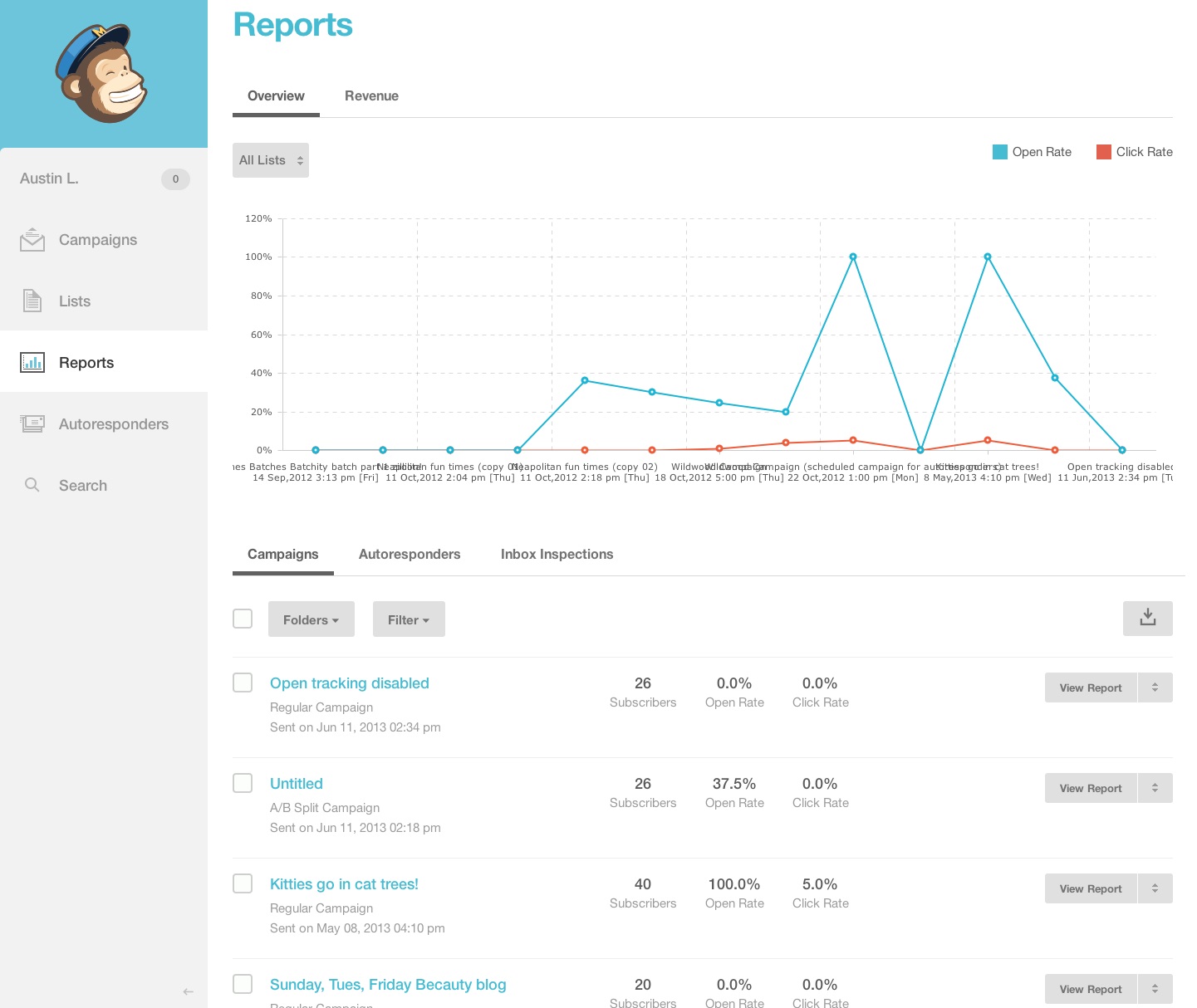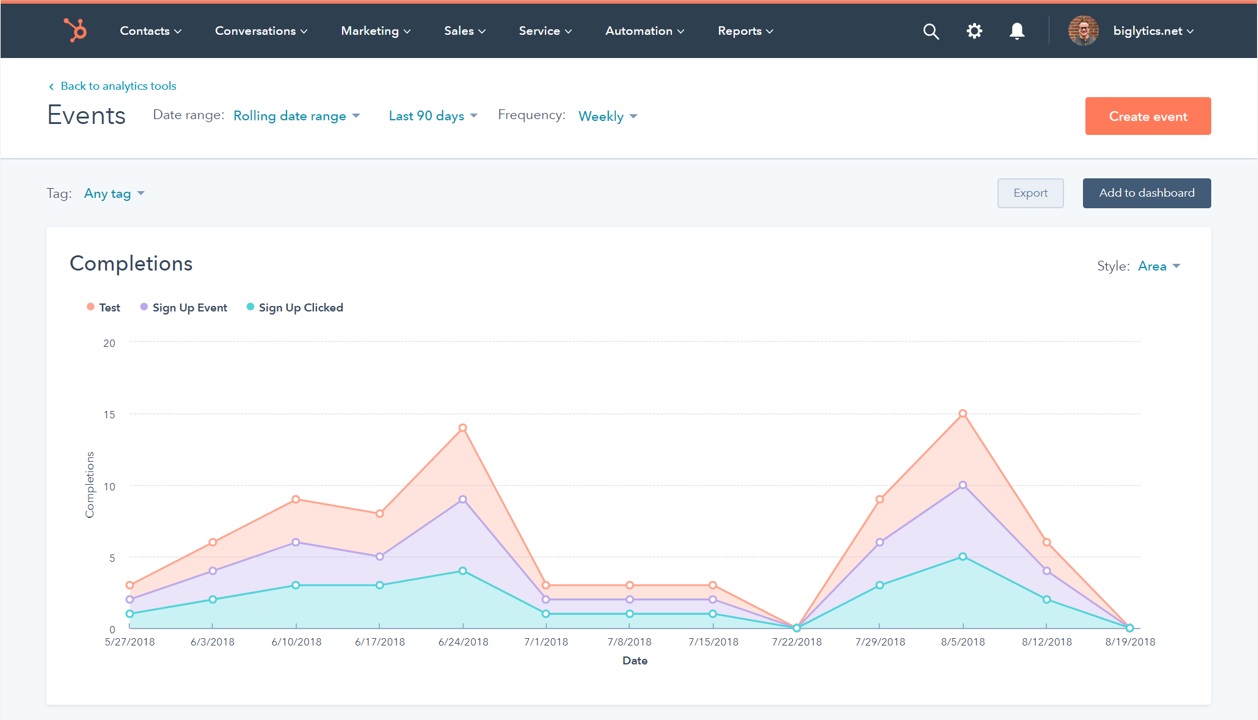Hubspot vs Mailchimp: Which Email Marketing is Right for Your Business?
Some people have learned of HubSpot, but most don’t realize what it does. HubSpot provides an enormous variety of features, permits, and price points.
In contrast, MailChimp is far simpler to comprehend. Late, they have laid in extra functions, but the price is still easier to grasp.
Then why would you want to go across HubSpot to MailChimp? This article will analyze and compare some characteristics of Hubspot vs Mailchimp.

What is Hubspot?

HubSpot is a comprehensive solution with CRM, inbound marketing, email marketing, analytics, the CMS website, service, help desks, etc.
HubSpot mainly has the ability to manage all components of your digital ecosystem. Everything behind a convenient login. The problem is that not all of this feature is cheap.
The purpose of this post is to find the differences between Hubspot vs. Mailchimp; you want to know how the email marketing element works compared to Mailchimp. Just keep your mind in mind that you might want to combine your email marketing strategy with other items such as sales, CRM, or your website, and HubSpot will make a lot of sense.
What is Mailchimp?

MailChimp is also the first email marketing site. It was around for years, many trusted, and has a really low price point. It even has a rather unforgettable esthetic monkey.
The app is a very simple to use email marketing platform with editable templates, personalization, quick list management, and outstanding email review and monitoring.
MailChimp is free to link hundreds of thousands of users to the website, basically. It does, though, rise dramatically as the e-mail database expands by 2,500.
Hubspot vs Mailchimp email marketing comparison
Features
Project and templates
Hubspot vs Mailchimp give hassle-free interface – good and simple editing models
Your business wants glamorous advertisement strategies visually. Perhaps you’re not a designer or a coder, but your team still needs communications that look like you’ve recruited a design pro. Fortunately, there are both Mailchimp and HubSpot.
All have smooth drag-and-drop editors. With HubSpot and Mailchimp, interface elements like graphics can quickly be transferred to the correct location, or colors can be modified with a touch. And you will see just what the email looks like for readers.
If you don’t have a designer who can build your email prototype, don’t be scared. HubSpot vs Mailchimp all deliver pre-designed models that are tidy, professional, and attractive.
Although Mailchimp provides 100 templates, I considered HubSpot templates more flexible and adaptable compared to HubSpot 45. If you want to pick a template easily, you may want to go to Mailchimp. If you are more involved in specific branding, you can choose customizable models from HubSpot:
Tools for automation
Automation is magic and HubSpot is a mighty sorcerer
All right, email marketing software doesn’t have magical abilities, really. But when you have carefully configured email personalization, automation sounds like magic for the clients. Both Mailchimp and HubSpot provide automation software, but they provide a number of variations and how much you can spend.
Mailchimp just provides simple automation – mostly auto-answers. The key distinction. The best thing is that even on the free plan, you get this option. However, you have to use another method to obtain other useful automation functions such as A/B inspection. That means another registration, maybe a charge, and something else to think about.
On the other side, HubSpot comes with all the automation you would ever need to install on the web. And HubSpot provides client experience monitoring, unlike Mailchimp (CRM). You can use your own contact lists which allow you to eliminate the magic trick of personalization.
Unfortunately, only the very expensive Pro and Business plans come with the exciting automation options from HubSpot. You would require an Enterprise Plan if you want event-based automation prompts – a valuable method for conversion.
Although both Hubspot vs Mailchimp allows you to build workflow automation, the automation map by HubSpot is particularly helpful to show the procedure. The drag and drop feature of the chart often allows adding or rearranging measures simple.
Because a HubSpot workflow prototype will start and then add basic If/Then instructions to cause automation, you don’t need any expertise. In just a few minutes, I worked out much of it.
Analyzes
Upping The Marketing Game – What is the best service?
It’s a great start to build attractive emails for your marketing activities. But you do have to know how the communications function, which is far more than merely watching available prices. HubSpot vs. Mailchimp provide analytics on their paid plans, but HubSpot offers more concerning consistency and research software quality.
You get essentially four reports with Mailchimp: campaigns, similarities, automation, and landing pages. You will produce these reports for any pleasant crowd. However, you just get the details – no insights, no advice. You can finally spend a lot of time trying to find out what the findings say and what steps to take.

On the other side, HubSpot really succeeds in analytics. HubSpot, for example, offers specific statistics about the bounce category in lieu of providing you a bounce rate (like Mailchimp), so you know what you ought to do differently. And any click includes a lot of details, including the computer model, how long the reader has been on the website, and the links it clicked on.

In the HubSpot Origins tab, you can note the greatest discrepancies between the analytics provided by these two providers. On this page, HubSpot displays the outcomes of any attempt to move traffic and offers you essential insights into the best way to function.
The best aspect is the HubSpot review page, which compares in one position all the appropriate dimensions for your emails. You see the entire picture automatically, rather than switching between reports as Mailchimp does.
Pages of landing
Great landing pages Are you needed – what tool does it allow you to create?
The emails you send must lead somewhere, and it is a landing page almost always. Regardless of how many prospective clients open your post, if you can not convert your landing page, your email did not do the job. However, it is not easy to build an access page that suits the branding and website design.
In Mailchimp, you cannot build a landing page directly but can incorporate other resources that generate landing pages. Therefore, you can still build this important landing page if you select Mailchimp for other reasons (most likely price). And Mailchimp can have analytical details on your landing pages. However, for me, the desire to incorporate other resources is a change. I need no other instrument. I’ve had a gazillion now.
In the meantime, the maker of the HubSpot landing page almost made me swoon. The page editor is not only simple to use, but you can also choose from a range of very flexible templates like for emails.
I really like to store action calls (CTAs), because it’s super easy to connect them to new landing pages. Only downside: landing pages are not included in the free package of HubSpot. But the update is almost definitely worth the costs if you choose to create your own landing pages.
Integration of social media
HubSpot provides far better than Mailchimp has the basics
Email and social network coverage are the most popular web marketing strategies. Ideally, these two efforts can be beautifully interwoven. You might, of course, handle the social network with software other than your inbox, however that can’t just be awkward – it can contribute to inconsistencies in the message of your campaign.
Mailchimp has the fundamentals to incorporate your activities in social networking into your email campaign. Instagram, Twitter and Facebook advertising and organic ads are accessible on all major channels. This marketing model helps all the communications and the display of your advertisements and emails to be consistent.
You may also pursue social media updates and campaigns on the free schedule, but the website in Mailchimp advises of “additional charges.”
HubSpot provides far more than social network connectivity – it involves a whole management framework for social media. From blogging to reporting and analytics, you can do anything. And all these qualities are simple to use. I considered the monitoring role extremely helpful and intuitive.
For instance, social network integrations of HubSpot cost more than Mailchimp’s basics. But since a good social networking game is important to the growth of your company, and in the context between Hubspot vs Mailchimp, the importance that HubSpot tracks and analyzes add up sometimes.
Prices
Hubspot pricing

The standard email feature pricing of HubSpot begins at USD 50/month for 1000 contacts. The whole Marketing Pro kit begins at USD 800/month for advanced features with lists, workflows, and automation. While this price sounds expensive compared with alternatives like MailChimp, it is crucial to note how much effort the staff will save and how much benefit you might gain out of an integrated method.
MailChimp pricing

MailChimp is very cost-effective compared to other alternatives, especially for smaller organizations that start with less than 1,000 contacts. The simple package “Essentials” begins at $9.99/month and charges about $5 a month with extra contacts over the first 500. If you want to carry out more A/B severe promotions, you need the “Premium” edition for a further $299/month. Additional packages are different, and the size is cheaper as you expand; an illustration of price scaling with the ‘Normal’ bundle is shown below:
Pros and Cons
To further research the suitability of Hubspot vs Mailchimp for each business, this part will offer some pros and cons of both tools to help you choose the best one for your business.
Hubspot
Pros
Editor with Drag & Drop
One of the greatest downsides of using HubSpot before was that something other than templates needed support from developers to ensure that the emails looked fantastic in and form of a mailbox. In November 2019, HubSpot published the latest email ‘Drag & Drop Email Editor’ which makes it simple to create new and custom templates. This feature is fresh (so we foresee a lot of hiccups, not all features), but for HubSpot, it’s a major leap forward.
Flexible layout**
HubSpot’s email framework is very powerful and has almost limitless features and design possibilities (when coupled with Marketing Pro). While HubSpot has a drag & drop email template for users at the entertainment stage, it supports custom email coding and provides you far more versatility in building custom templates if you have the support of a developer.
All-in-one automation marketing suite
Would you like to build an insightful email campaign, which delivers out some email addresses from a specific list of unique details and uses personalization tags to evade spam filters and appear like a real person? This can be achieved with HubSpot. HubSpot is a powerful platform for promotions and sales, which will display each contact through their emails and monitor consumer commitment and use technology to nurture guidelines until they are active. HubSpot allows you to watch specifically what sites the lead has viewed and how they communicated after the email connections with your website and sales staff. Considering all these details in one location allows the marketing and sales staff total transparency in their customer experiences from beginning to end.
Cons
It’s tougher to run
There are nearly infinite choices with virtually limitless features and an overload of modes that may annoy the novice. The email interface manager of HubSpot was best tailored to developers or coding experts. Still, the current Drag & Drop editor has taken a long way to close the distance between HubSpot vs. Mailchimp. Architecture workflows and optimal digital sales activities are not simple (to do right), and anyone with an automation background or an external organization would definitely be needed to aid with the institution.
Mailchimp
Pros
Fast to run
MailChimp delivers a premium brand, with a straightforward app to use and scalable rates across every market model (no matter how big or small). It takes no genius or creator to build MailChimp campaigns, making them simple to use and use by nearly everybody. The drag- and drop interface manager is one of the simplest but can also be difficult for people without web image editing expertise.
Reports
The native monitoring tools in MailChimp are fantastic for detailed email review, but once the contribution track is over, you can ‘split’ and need to calculate the presence of your website separately (unless you use both the MailChimp landing pages or the combination of Google Analytics).
Many extra features
MailChimp recently sought to diversify its services portfolio which added functionality such as: landing pages, advertisements, social posting, and login forms to contend with other “full-stack” solutions such as HubSpot. There are a few additional strong email functions, such as forecast demographics and advanced segmentation, but they are not completely used and involve a complete pro edition.
Cons
Flexibility is missing
MailChimp uses a very strict drag and drop builder, which ensures it’s not even practical to deviate from how MailChimp needs to handle stuff. Although the Mailchimp constructor has many great features and some of the best design resources, you can restrict yourself if you choose to create really customized emails.
Average assist
Help capabilities are restricted in contrast with other channels which will offer support answers within 5 minutes. Live assistance is accessible exclusively with the product’s paying options.
Power lack of automation
Although MailChimp does have several native API integrations with other tech systems, typically this makes it more work than worth it and it makes it very challenging to build “intelligent campaigns’’ based on prompts or occurrences in your CRM. MailChimp’s internal automation framework is stable but does not support a workflow view and you won’t be able to build activities beyond email (eg: sending SMS, interacting with your CRM, changing contact information, etc).
Which one you should use for your business?
Who is Hubspot for?

Between Hubspot vs Mailchimp, HubSpot is targeted at all, from small and medium-sized businesses to big firms. They provide several license choices for their applications that fit different company sizes, needs, and requirements.
The benefit of HubSpot email marketing is that you can handle more than just your email marketing because it is an advanced marketing platform.
HubSpot is intuitive and quick to use for both beginners and expert email marketers when it comes to email marketing. HubSpot email marketing Pound for Pound does everything the MailChimp does. All have excellent email editors drag and fall. Both scheduling and list segmentation are feasible.
Hubspot vs Mailchimp are free of charge before you start; HubSpot requires 2000 emails to be submitted every calendar month, of course with HubSpot. You can pay $40 per month for HubSpot Marketing Starter. You will send 5000 emails per month. Upgrade to $80 to 10,000 ppm and $120 to 15,000 ppm, etc.
HubSpot, though, is not only an email marketing tool but rather a marketing automation framework developed to promote the development of digital business.
HubSpot Marketing Free and Starter can provide you with website talk and Facebook Messaging integration, website forms integration and many more. HubSpot may also be a reasonable choice if you intend to be flexible on your digital marketing and explore a few other digital platforms and tactics.
You covered anything like: The HubSpot Marketing Framework with its marketing automation and inbound marketing:
- Generation of lead
- Commercialization
- The Blog
- Conduct scoring and help
- Pages of landing
- Social publication and surveillance
- Ad management charged
Publicity control of Facebook, LinkedIn, and Google Advertisements for paid advertisements. And that’s all in the marketing suite of HubSpot. A CRM, operation, website CMS, and sales feature are still available.
So, if email marketing is only part of your present digital marketing plan – or perhaps of your potential digital marketing strategy – HubSpot with its various features might be the way to go regardless of the costs.
Yet return to email marketing. HubSpot is outstanding for developing mail marketing strategies that are customized to individual consumers (ideal consumer profiles) and cultivating guidance by prompting emails and answering writers. Based on the activities taken by leaders/contacts and their website activity, the HubSpot framework can cause various kinds of emails and workflows. HubSpot renders email marketing streamlined and fully automated simply to cultivate and ultimately turn leads.
Who is Mailchimp for?

MailChimp is perfect for email marketing beginners.
MailChimp is mainly targeted at small to medium-sized companies. It is strongly recommended for organizations who are new or have minimal capital in the field of email marketing. This is attributed to the step-by-step nature, ease of access, import and segmentation drag-and-drop models, and logical listing.
MailChimp has a free plan to deliver up to 10,000 emails to 2,000 individual users per month. This is suitable for personal accounts and small firms. And the best part is that on this free account most resources and models are available.
If you are a small organization searching for an all-in-one approach, it might just be what you want. Bear in mind that they paste their branding on the bottom of the emails, which cannot be deleted.
MailChimp has pay-as-you-go. This is perfect if you intend to send fewer letters.
The free and paid accounts offer you a few added features like marketing automation, but do not demand too much of it. It is just for autoresponders. Read this Neil Patel post about how to use email answering mails.
With Hubspot vs Mailchimp, you can handle lists of your contacts/subscribers, set up campaigns with the campaign generator, and allow free use of a selection of simple templates. To submit a custom template to MailChimp, you need to be a little educated about HTML coding.
HubSpot and MailChimp provide you with the possibility of arranging email marketing promotions which will be delivered at such hours.
Email logging is a popular aspect in all tech applications, such that you can conveniently see how many opportunities, clicks and products you have got. HubSpot however provides much more depth and personalization than MailChimp.
MailChimp is, in my view, the strongest email marketing tool for anyone.
Final words
Finally, it’s really your budget and what type of campaign automation you’re searching for. HubSpot certainly is the place to go if you are searching for a holistic digital marketing approach that encompasses everything.
But if you’re a small corporation and you don’t want much more than a good email marketing tool, consider MailChimp.
Both channels are fantastic and we hope this article can help you determine which one is for you between Hubspot vs Mailchimp.
New Posts








